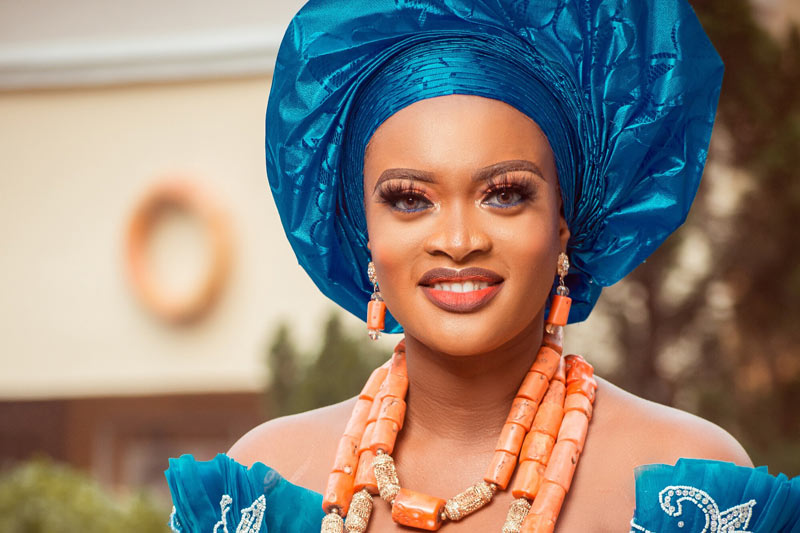Did you know that in Zambia, extended family plays the role of a support network, caring and protecting those in need? For example, should parents pass away, then the welfare of their children passes to uncles and grandparents. Do you know their sacred traditions of acceptance into a family?
Laden with feasts and song, the path to a Zambian wedding is fun if expensive. Read on as we discuss Zambian wedding traditions.
Insalamu
Insalamu is where the journey to marriage begins. We typically give a ring to symbolize our intent to marry in the West. Yet, that is not the case in Zambian traditions.
After a courtship, the man will save up for an Insalamu. This usually takes the form of beaded jewelry or money.
Once the girl accepts, then approval must be asked from her parents. This is different from western traditions, where approval is usually asked before the engagement preparation.
Once done, the Insalamu is taken to the grandmother, the family’s matriarch. This signals to the whole family that the girl is ready to marry.
Bana Chimbusa
In the Bemba culture of Zambia, before getting married, the girl is sent to a Bana Chimbusa. This person acts as a teacher, telling the woman everything she needs to know about love and marriage. Tradition dictates that she should keep all she has learned secret until the day of the wedding.
Everything else she learns happens at an arranged kitchen party. Guests from both sides of the family will gather for food and celebrations. They share help and advice with the woman and accept each other into their families.
Katawa Mpango
This person acts as a mediator for the Zambian wedding ceremony and its preparation. Their part begins when the groom’s family decides to visit the bride’s family. On this visit, a gift of a ceremonial hoe arrives to symbolize fertility.
When this happens, the groom will also bring beads and money. This sits on a plate and gets covered with another. This is the Insalamu, as mentioned before.
Once the girl and her family agree, the Katawa Mpango will begin the meditation, reporting to the man’s family. He will arrange for marriage payments and appoint a marriage council. A date is set for his next return to the groom’s family when exotic foods get laid out in celebration.
Icisumina Nsalamu
The Icisumina Nsalamu is a special meal prepared by the bride’s family. Serving the groom shows their acceptance of him as a son-in-law and his marriage proposal.
Despite its significance, the meal is very straightforward. It consists of a bowl of thick maize porridge, known as Nshima. To accompany it, a whole chicken gets slaughtered and prepared.
Nothing is expected of the groom at this point in terms of gifts. This is simply a gesture of acceptance from the bride’s family.
Lobola
The Zambian marriage payment arranged by the Kataw Mpango is known as the Lobola. Acting as a dowry of sorts, it can include a range of items, including cattle and chickens. If the girl is a virgin, it is traditional to offer a cow.
In modern times, these items have changed somewhat. A suit for the father is a common request, as are shoes, blankets, and clothes.
Icilanga Mulilo
This is a more extensive meal prepared by the bride’s family and is a more significant, symbolic Zambian marriage gesture. The term translates literally as a showing of the fire. Essentially, it is an invitation to the groom to show that he is welcome to eat with the family at any time.
Before this, it was forbidden for the groom to eat at the bride’s home. Preparation is done on a huge selection of foods to show off the family’s traditional cuisines and cooking skills. There is an expectation that the groom will taste each one.
Preparation takes place in the home of the bride’s relatives. When the food preparation is complete, it is loaded onto parcels resting on the head of the ladies. They travel to the waiting house amid drumming, singing, and a party atmosphere.
Upon arrival, the party will wait at the door. The groom’s family drops money at the threshold before the women walk into the home backward. After an invitation to set down the food, the celebration begins.
In the room, singing and dancing continue. The feast begins. It also shows how the responsibility of providing for the bride now passes to the groom instead of the family.
Ukukonkola
Ukukonkola is another symbolic meal prepared by the bride’s parents. Its purpose is to show that he has the authority to make family decisions regarding his wife. He can now make decisions without their consultation.
Before the meal, the groom must go to the bed-chamber of his mother and father-in-law. This is a sacred place that only the parents are usually allowed to enter. He removes the bedding and takes any valuables there.
He is then led to the living room and does a similar thing with the sofa. Anything he finds, he must keep. This repeats with pots and pans in the kitchen, though he must also eat any food he finds.
This is the final meal and last process. After this, he is accepted as one of their own children.
Zambian Wedding Traditions
Now you know these Zambian wedding traditions, you can see how important the family unit is. You may end up at the wedding with a full belly and empty wallet, but each stage is essential in building the relationship.
Are you looking for assistance in planning your wedding? We have the ultimate planning site to help you in the run-up to the big day.Contact Wedding Details here and let us help with your preparations.
Wedding Details is your comprehensive guide to all aspects of your wedding. From traditional ceremonies to questions regarding the guests, our website offers you one place to do all your research.

